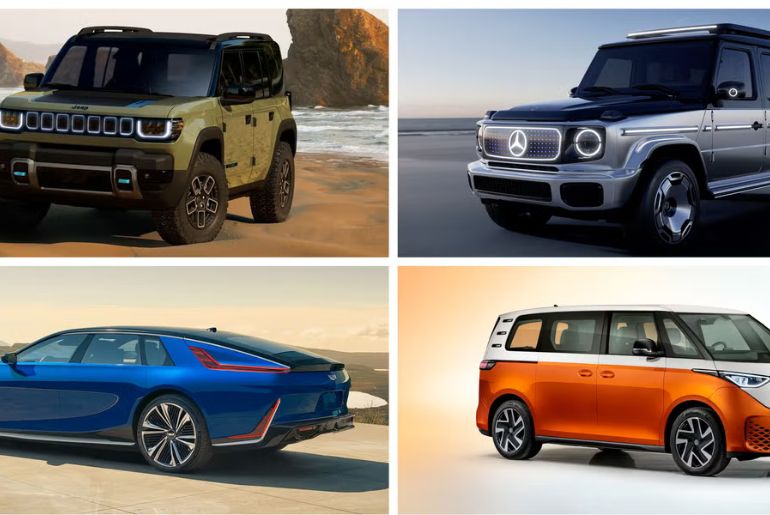With 2025 set to be a historic year for the launch of affordable EVs, the electric vehicle (EV) market is about to undergo a dramatic change. This change is expected to be a turning point in the global shift towards sustainable transportation by making electric mobility more affordable for a larger user base.
Emergence of Budget-Friendly EVs
Historically, the high upfront costs of EVs have been a barrier for many potential buyers. However, advancements in technology, economies of scale, and increased competition are driving prices down. Several manufacturers have announced plans to launch affordable electric models by 2025, aiming to cater to the mass market.
Here are some anticipated budget-friendly EVs set to debut in 2025:
- Renault Twingo: Expected to be priced under £17,000, this compact EV offers a range of 185 miles and a practical five-door setup, making it ideal for urban commuting.
- Cupra Raval: With a price tag around £25,000, the Raval boasts a 270-mile range and 234 bhp, combining performance with affordability.
- Volkswagen ID.2all: Starting at approximately £21,000, this model offers an impressive 280-mile range, a spacious 490-litre boot, and 223 bhp, positioning it as a versatile option for various driving needs.
- Maruti Suzuki EVX (Expected price: ₹10 – ₹12 lakh, launch in 2025): A compact SUV from Maruti designed to cater to budget-conscious buyers.
- MG Air EV (Expected price: ₹10 lakh): A compact and affordable urban commuter expected to launch soon.
Several key factors are contributing to the rise of affordable EVs:
- Technological Advancements: Ongoing advancements in battery technology have resulted in lower costs and higher energy densities. The development of solid-state batteries and advancements in lithium-ion batteries are increasing vehicle range and reducing manufacturing costs.
- Economies of Scale: Manufacturers gain from lower costs per unit as EV production increases. Customers benefit from this decrease, which raises the price of EVs relative to cars with conventional internal combustion engines.
- Government Policies and Incentives: Many governments are implementing policies to promote EV adoption, including subsidies, tax incentives, and stricter emission regulations. These measures encourage manufacturers to develop affordable models and consumers to consider electric options.
- Consumer Demand: Growing environmental awareness and the desire for cost-effective transportation solutions are driving consumer interest in EVs. The demand for affordable electric cars is prompting manufacturers to expand their offerings in this segment.
Implications for the Automotive Market
The introduction of budget-friendly EVs is expected to have several significant impacts:
- Increased Adoption Rates: Less expensive EVs are probably going to be more widely adopted, which will help the worldwide effort to cut carbon emissions and fight climate change.
- Market Competition: As more affordable models enter the market, producers will compete more fiercely, which could spur innovation and result in additional price reductions.
- Infrastructure Development: As EV ownership rises, more infrastructure will be needed for charging, which will lead to investments in both public and private charging options.
- Economic Opportunities: The expanding EV industry will open up business prospects in maintenance, manufacturing, and other services, which could result in the creation of jobs and economic expansion.
Obstacles to Come
Despite the positive outlook, there are still a number of obstacles to overcome:
- Charging Infrastructure: To encourage widespread EV adoption, it is necessary to address the accessibility and availability of charging stations, particularly in rural and underserved areas.
- Supply Chain Restrictions: To fulfill the expected demand, it is crucial to guarantee a steady supply of vital resources, such as cobalt and lithium for batteries.
- Consumer Education and Awareness: Efforts must be made to enlighten consumers on the advantages and realities of owning an electric vehicle (EV), including details on upkeep, charging, and the overall cost of ownership.
The development of the automobile industry is expected to reach a major turning point in 2025 with the introduction of reasonably priced electric vehicles. These advancements are expected to hasten the shift to sustainable transportation by opening up electric mobility to a larger audience. Customers will have more choices as producers release these affordable models, balancing individual tastes with environmental considerations. Despite the obstacles and opportunities that lie ahead, there is no denying the momentum in the direction of a greener future.


